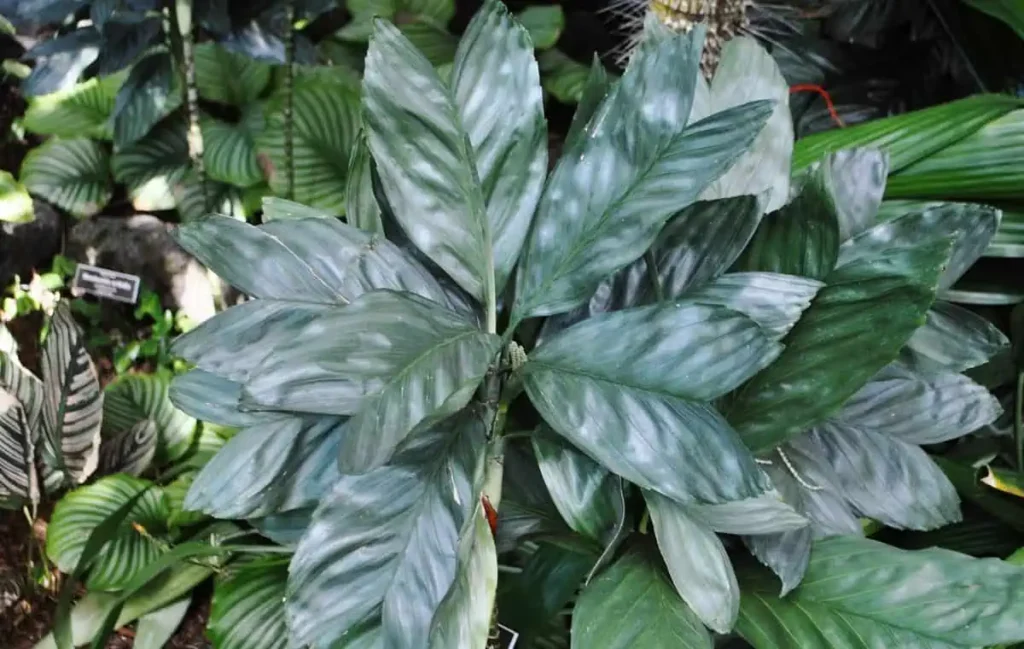
The metallic palm (Chamaedorea metallica) is a dwarf, dioecious, perennial, ornamental palm with distinctive shiny, metallic foliage. Native to understories and dense forests of Mexico, it rarely reaches its full height of 7.87 ft (2.40 m) when cultivated domestically. It features a single, erect stipe (stem) with slow growth. Its leaves are bluish-green with an interesting metallic sheen. They are entire with a bifid tip (split into a V shape at the apex), broad, oval-shaped, leathery, and with a clearly visible midrib.
The foliage is supported by petioles about 5.9 inches (15 cm) long and concentrate at the top of the stipe, forming the crown and giving the plant a more voluminous appearance. The inflorescences are long and slender, spike-type, and emerge in winter, with tiny female or male flowers, orange-red in color. Although they are of secondary ornamental importance, the inflorescence provides an interesting contrast to the foliage. The fruits appear in spring, are berry-type, small in size, and red in color.

This palm is ideal for indoor environments due to its small size and adaptability to low light. It’s a charming species that will add not only a touch of the tropics but also a dash of sophistication with its metallic and cut foliage. When grown in pots, they should be wide to accommodate its roots, and stylishly so, to be placed in your favorite corner of the room.

Beyond home decor, the metallic palm does well in condo entrances, offices, and corporate settings. It can also be used in shaded flower beds, understories, and tropical gardens in partial shade, even as a border along walls, as long as it is protected from direct sunlight. The metallic palm is easy to grow and requires simple maintenance. Occasionally remove dead and yellowing leaves, and nourish your palm with proper palm fertilizer. Interestingly, this palm allows for height reduction through air layering. That is, by producing new roots on the plant’s trunk, it can be cut to achieve a smaller size.
It should be grown in partial shade or filtered light and thrives in fertile, well-drained soils. Cultivation under direct sunlight can burn its beautiful foliage, diminish its characteristic metallic sheen, and even lead to the plant’s death. When grown in pots and planters, it’s important to lay a good drainage layer at the bottom, combined with sand and, finally, organic-rich substrate. The metallic palm enjoys warm and humid climates. It does not tolerate temperatures below 50°F (10°C), thriving in temperatures above 64.4°F (18°C). In this regard, it may enter a dormancy period in intense cold. In cold climates, it’s advisable to move it indoors or to greenhouses during the winter.
Water the plant when the substrate is slightly dry, never allowing it to become waterlogged. Fertilize in spring-summer, preferably with soluble or slow-release fertilizers in NPK formulations, suitable for foliage or palms, always following the manufacturer’s recommendations. It is advisable to water the substrate well before applying fertilizers, both to facilitate nutrient absorption and to avoid root burn. As this is a dioecious species, to propagate metallic palm, plants of different sexes are required for fertilization. Then, harvest the ripe fruits from the female plant, depulp them, and sow immediately in a moist substrate.


